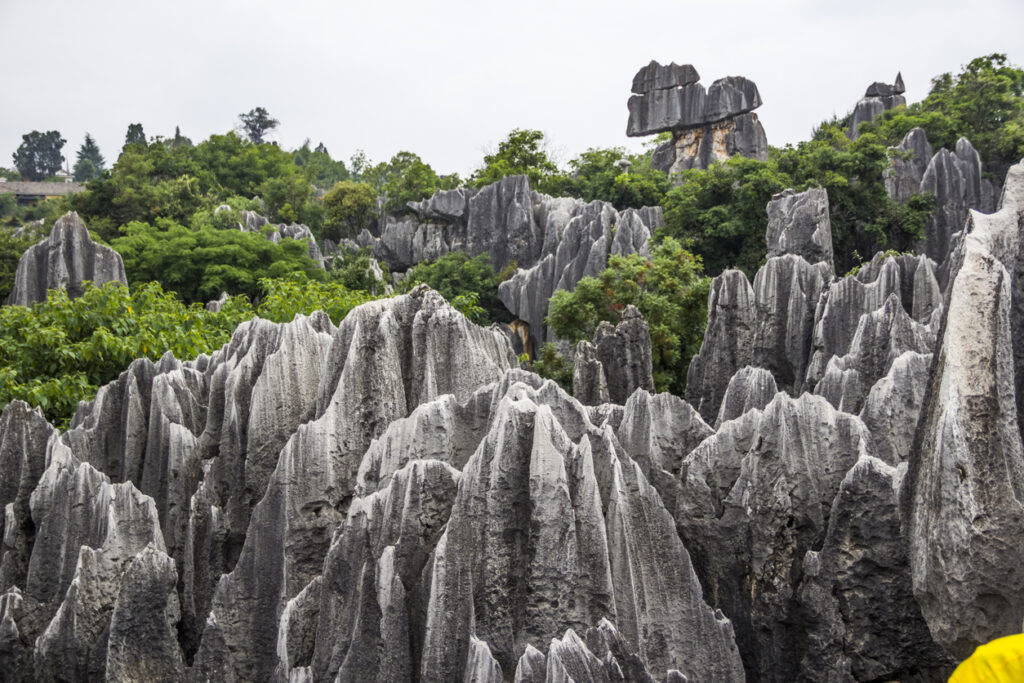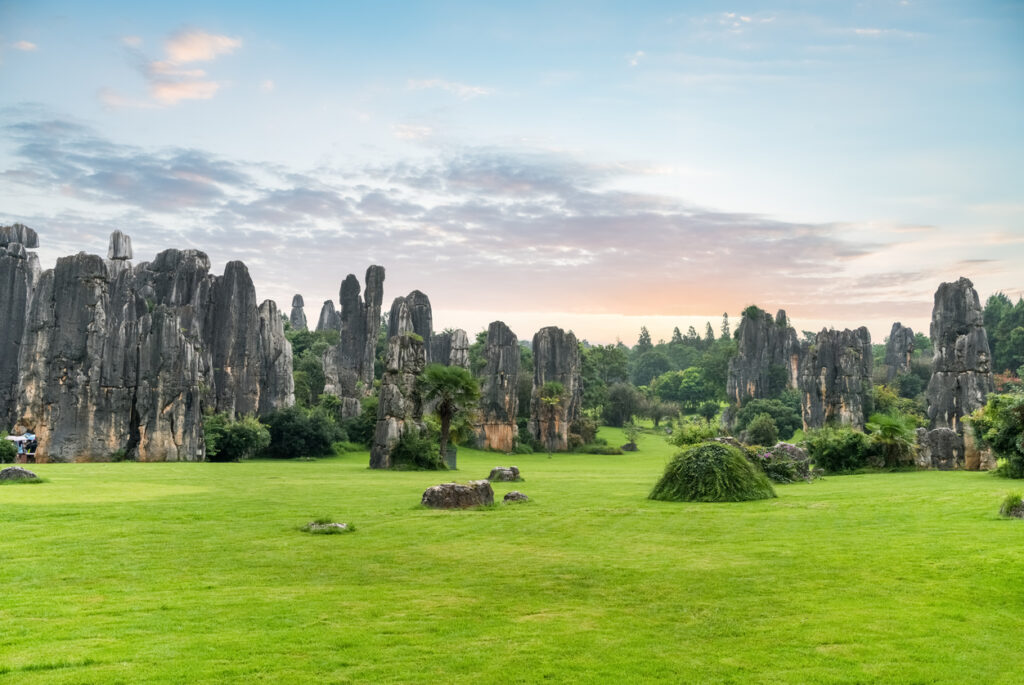
At first glance, China’s Stone Forests look like something out of a fantasy film—towering rock formations that stretch skyward like petrified trees. Found primarily in the Yunnan Province, these jagged limestone spires feel more like an ancient ruin or a fossilised jungle than a natural landscape. But there’s nothing mythical about how they formed. The truth is, they were shaped by an incredibly slow but fascinating geological process that’s been happening beneath our feet for millions of years.
The most famous of these formations is the Shilin Stone Forest, which translates literally to “stone forest.” Covering over 300 square kilometres, this otherworldly site has been designated a UNESCO World Heritage Site—and for good reason. Here’s a closer look at the science behind how these surreal landscapes came to be and why they matter more than you might think.
It all starts with limestone.
The Stone Forest is made almost entirely of limestone—a soft, sedimentary rock formed from ancient marine organisms like coral, algae, and shell fragments. Around 270 million years ago, what’s now Yunnan was covered by a shallow tropical sea teeming with life. Over time, those remains piled up, hardened, and formed massive layers of limestone beneath the surface.
Once tectonic shifts lifted that seabed above ground, the real transformation began. Exposed to air, wind, and especially water, the limestone started breaking down. But it didn’t just erode randomly—it eroded in very specific patterns that would eventually create the forest-like structures we see today.
Karst topography is the secret behind the shapes.
The process that forms Stone Forests is known as karstification. It happens when slightly acidic water—usually rain that’s absorbed carbon dioxide from the atmosphere—seeps into cracks in the limestone and slowly dissolves it. Over time, these tiny cracks become deep crevices, and the softer material around them wears away.
The result? Isolated rock pillars, towers, and even ridges that stand tall like natural sculptures. Karst landscapes are found all over the world, but the Shilin Stone Forest is one of the most dramatic examples of vertical karst formation anywhere on Earth.
Weather plays a big role in the sculpting.
Even after the initial rock pillars form, they keep changing shape due to erosion from rain, wind, and temperature fluctuations. Water doesn’t just run over the rock—it seeps into it, expanding and contracting as the temperature changes. That creates deeper grooves, sharp edges, and bizarre shapes over time.
Some of the formations now look like animals, mythical beasts, or towering mushrooms. Locals have named many of them based on what they resemble, which adds an extra layer of folklore to an already otherworldly scene.
The formations aren’t all the same age.
Although the limestone bedrock itself is around 270 million years old, the stone pillars in the forest haven’t all been shaped at the same time. Some are still forming today. The process is slow—millimetres of change every few decades—but it never really stops.
This ongoing transformation makes the Stone Forest a kind of living geological storybook. It’s a place where you can literally see the layers of time etched into rock, with older spires standing smoother and more weathered than the sharp-edged newcomers still being sculpted by the elements.

It’s not just a natural wonder—it’s culturally significant.
The Stone Forest is home to the Sani people, a branch of the Yi ethnic minority. For them, this isn’t just a geological marvel—it’s woven into their folklore and identity. According to one legend, the forest was created by the goddess Ashima, who turned into stone to escape a forced marriage. Her “statue” still stands in the forest today.
This deep connection between the people and the land adds another dimension to the site. It’s a place of story, ritual, and community, not just a curiosity for geologists or tourists.
Similar stone forests exist in other parts of the world.
While Shilin is the most famous, China has other stone forests as well—like the Naigu and Suogeyi formations nearby. And karst landscapes can be found in places like Madagascar, Slovenia, and even parts of the UK. Each one has its own shape, colour, and scale depending on local rock types and weather patterns.
Still, nothing really compares to the scale and drama of Yunnan’s Stone Forests. They’re often used in textbooks and geology courses as textbook examples of how time and water can transform a landscape completely.
Scientists study them to understand climate and Earth history.
Because karst landscapes are formed over such long periods, they can reveal a lot about Earth’s past. Scientists use the chemical makeup of the limestone and water patterns in the formations to learn about ancient sea levels, climate changes, and tectonic activity.
In a world dealing with rising temperatures and changing landscapes, studying places like the Stone Forest helps us understand how the planet adapts—and how much it remembers.